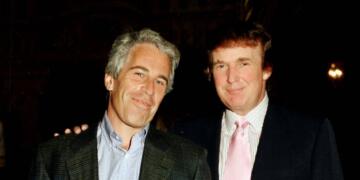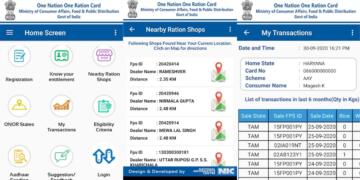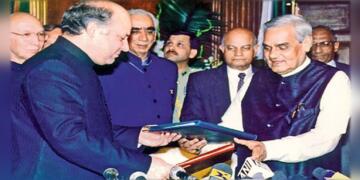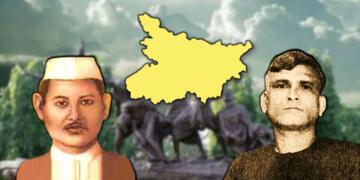When Doordarshan decided to air Ramanand Sagar’s Ramayan during the pandemic, millions of kids got to know, for the first time, the valour of Bhagwan Ram. Two years down the line, if you ask a kid about Bhagwan Ram, the most likely answer would be that he killed Ravan. However, for Ayodhyawasis, Bhagwan Ram was much more than the one who killed Ravan. They were not surprised upon hearing that Bhagwan had killed Ravan. There is a reason behind it. And the reason is Bhagwan Ram’s historical legacy which had left an immutable imprint on Ayodhyawasis’ minds.
Exploits of Bhagwan Ram
Young Ram was a man filled only with virtues. It was well known in Ayodhya that he was wise, he had conquered anger, he was calm, he was knowledgeable and most importantly, he was full of valour. The valour part of his personality took some time to manifest. According to Valmiki Ramayan, the original version of Ramayan, Bhagwan Ram had freed Ayodhya and its surrounding forests from the terror of various Rakshas.
Most prominent of these Rakshas was Tarakasur. Bhagwan Ram eliminated Tarakasur on the orders of his teacher Rishi Vishwamitra. Through this, the Rishi also wanted to ascertain whether young Ram was a follower of Dharm or not. Any young man could leave the battlefield fearing his life, but not Bhagwan Ram. Partly because he did not fear Tarakasur and partly because Rishi Vishwamitra ordered him to.
Satisfied with young Ram’s conduct, Rishi gave him Astras and Shastras. Shastras are weapons handled by hand. These include swords, lances, Gada (mace) among others. Astras on the other hand are basically baans. Modern day version of missiles. These baans can only be fired by reciting mantras.
दण्डचक्रं महद्दिव्यं तव दास्यामि राघव || १-२७-४ धर्मचक्रं ततो वीर कालचक्रं तथैव च | विष्णुचक्रं तथात्युग्रमैन्द्रं चक्रं तथैव च || १-२७-५ वज्रमस्त्रं नरश्रेष्ठ शैवं शूलवरं तथा | अस्त्रं ब्रह्मशिरश्चैव ऐषीकमपि राघव || १-२७-६ ददामि ते महाबाहो ब्राह्ममस्त्रमनुत्तमम् |
By stating these words, Rishi Vihwamitra gave Bhagwan Ram Danda Chakra, Dharma Chakra, Kaala Chakra, Vishnu Chakra, Indra Chakra and Vajrastra, the spear of Shiv, the missile called Brahma-shira, Aishihik missile and Brahmastra.
Additionally, Gadas named Modaki and Shikari, nooses named Dharma-paasha, Kaala-paasha and Varuna-paasha, and Varunastra were also handed over to Bhagwan Ram. More weapon systems, all of them powered and blessed by gods, were put in able hands of Bhagwan Ram.
Yuvraj Ram was extremely popular among masses
All of it was not hidden to the people of Ayodhaya. The newly acquired arms and ammunitions only added to the already established legacy of Bhagwan Ram. People were convinced that if anyone could replace Raja Dashrath, then it could only be his elder son Ram.
Rishi Valmiki describes him as, “By patience and the related virtues, he was equal to earth, by wisdom to Brihaspathi and by valour to Devendra.”
According to Raja Dashrath “Rama is equal to Yama and Devendra in valour, to Brihaspati in wisdom and to a mountain in courage. He is more virtuous also than me.”
Bhagwan Ram had support from every quarter of Ayodhya, foremost of which were people of Ayodhya. They were more in awe of him than any other king would eventually go on to get respect in history. Preparations were in full swing. Ayodhya was filled with joy and every citizen was participating in the celebratory events.
In the words of Maharshi Valmiki, “Banners and colourful flags were hoisted on temples, which looked brilliantly like the silver lining of cloud, at road junctions, in streets, on big trees situated in temple compounds, from watching towers at city gates, on shops of wealthy merchants, on buildings of rich family persons, on all assembly halls and all visible trees.” Devi and Devatas were also handed the cards for being a part of the coronation ceremony.
Intervention of Kaikeyi and departure to forest
All came to a standstill when Kaikeyi, mother of Bharat and most loved queen of Raja Dashrath asked him to grant two wishes to her. Raja Dashrath had promised to fulfil them during Dev-Asur sangram. Kaikeyi, under the influence of the maid Manthara, sought the throne of Ayodhya for her son Bharata and fourteen years of exile for Rama from King Dasharatha in the form of these boons.
To protect his father’s promise, Bhagwan Ram happily accepted fourteen years of exile. Along with Bhagwan Ram, his wife Devi Sita and younger brother Laxman accompanied him as well.
People won’t let him go
Along with both of them, people of Ayodhya also decided to join Bhagwan Ram. Accepting his sovereignty, people of Ayodhya followed all 3 for quite a considerable distance. They were just not ready to accept that Bhagwan Ram won’t be their king anymore. At last, Bhagwan Ram had to address them in order to send them back. Bhagwan Ram told them that he is only going in the forests to protect Pitri and Matri Dharm. People returned only when they were convinced that Bhagwan Ram was only taking a brief hiatus for 14 years.
Ultimately people of Ayodhya returned but their love for Bhagwan Ram did not diminish. In fact, it only intensified when they heard the valours of their beloved king in the forests. Before his ultimate fight with Ravan, Bhagwan Ram had killed infamous Rakshasas like Mareech, Viradh, Khar, Trishira among others. He had killed more than 2 lakhs Rakshasas himself. There came a moment, when Bhagwan Ram killed 80,000 Rakshasas within a short span of 70 minutes and that too with a simple bow and arrow. Imagine the swiftness with which he fired and reloaded them from his armoury.
People aware of his exploits in the jungle kept telling this to Ayodhyawasis. They were glad to hear that even in the forest their king was a king and had not left his Raj Dharm. They were eagerly waiting for 14 years to end. Meanwhile, Bhagwan Ram was involved in another bloody battle with Ravan, the king of Lanka. The killing of Ravan coincided with the end of exile period for Bhagwan Ram. He decided to head towards Ayodhya after ensuring that Vibhisan was crowned in Lanka.
Return of Bhagwan and celebrations in Ayodhya
Bhagwan Ram had to return to Ayodhya with Pushpak Viman, the aerial car that belonged to Kuber. Along with Bhagwan Ram, his brother Laxman, wife Sita, vanar Raj Sugreev and Lanka king Vibhishan were also slated to be in the Viman. All of this had been conveyed to Bharat by Bhagwan Hanuman.
Bharat asked his younger brother Shatrughan to make arrangements for Sri Ram’s arrival.
He told Shatrughan, दैवतानि च सर्वाणि चैत्यानि नगरस्य च | सुगन्धमाल्यैर्वादित्रैरर्चन्तु शुचयो नराः || ६-१२७-२ सूताःस्तुतिपुराणज्ञाह् सर्वे वैतालिकास्तथा | सर्वे वादित्रकुशला गणिकाश्चैव संघशः || ६-१२७-३ राजदारास्तथामात्याः सैन्याः सेनागणाङ्गनाः | ब्राह्मणाश्च सराजन्याः श्रेणिमुख्यास्तथा गणाः || ६-१२७-४ अभिनिर्यान्तु रामस्य द्रष्टुं शशिनिभं मुखम् |
It means “Let men of good conduct, offer worship to their family-deities, sanctuaries in the city with sweet-smelling flowers and to the accompaniment of musical instruments. Let bards well-versed in singing praises and Puranas (containing ancient legends, cosmogony etc.) as also all panegyrists, all those proficient in the use of musical instruments, courtesans all collected together, the queen-mothers, ministers, army-men and their wives, brahmanas accompanied by Kshatriyas (members of fighting class), leaders of guilds of traders and artisans, as also their members, come out to see the moon-like countenance of Rama.”
Deepawali on Shri Ram’s return
Pushpak Viman was destined to take all 4 of them to Nandigram. All roads from Nandigram to Ayodhya were levelled. The ground was sprinkled with ice-cold water. Parched grains, flowers, garlands, five flagrant colours were laid all across the roads, both inside as well as territories located within the vicinity of Ayodhya. Thousands of well-adorned elephants with golden girths were there to welcome Shri Ram. Warriors carrying javelins, spears and nooses were there. They were accompanied by thousands of foot soldiers.
Homes were cleaned and even the poorest Ayodhya citizen took due care of purifying minutes of belongings. Diyas were lit so that Bhagwan Ram could witness the grandeur of Rajya he was going to be the king of. Along with the lights of Diyas, firecrackers were burned out in celebration. Their sound were addons on Dhol, Nagare and other types of musical instruments being deployed to welcome Bhagwan Ram. The process was overseen by Dhrushti, Jayanta, Vijaya, Siddhartha, Arthasadhaka, Ashoka, Mantrapala and Sumantra under the orders of Shatrughan.
Whole of Ayodhya was singing Mantras, songs and slokas for Bhagwan Ram who was walking with garlands on his neck and flowers in his way. The grandeur celebration lasted for quite some time. Slowly, Ayodhya returned to its daily routine, inheriting a wonderful memory.
Next year, on the anniversary of his arrival, they decided to recreate the scenes. They thoroughly enjoyed it that year as well and from then on it went on and on and on. To this date, it has not stopped. Yes, in later years, some changes were introduced to ensure that the celebrations do not get too exuberant.
Reason behind worshipping Devi Laxmi and Ganesh Ji
The celebrations are a manifestation of Devi Laxmi. Even before Swachh Bharat started to bring in more investments, Indians knew about it. Devi Laxmi sits at places where there is cleanliness, where there is lightning, where there is no fear of dark. If your immediate environment is clean, there is no doubt that she will sit at that place. However, human nature is a bit greedy. Our minds can hold on to riches for quite a long time.
That is why there was a need to introduce some wisdom to the newly gained wealth. This is where the concept of Bhagwan Ganesh being worshipped in festivals came in. Ganesh Ji is there to quell the ego which the human mind gets occupied by when money comes to our pocket. That is the single most reason behind worshipping both Devi Laxmi and Bhagwan Ganesh in unison.
Change is only constant in this ever-changing world. Things come into existence, things change and disappear into oblivion. But Deepawali has not and will never be. Its genesis lies in the return of Bhagwan Ram. His return had people’s mandate to it, which is why celebrations will go on for Yugs to come.
Support TFI:
Support us to strengthen the ‘Right’ ideology of cultural nationalism by purchasing the best quality garments from TFI-STORE.COM


































